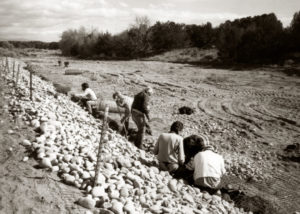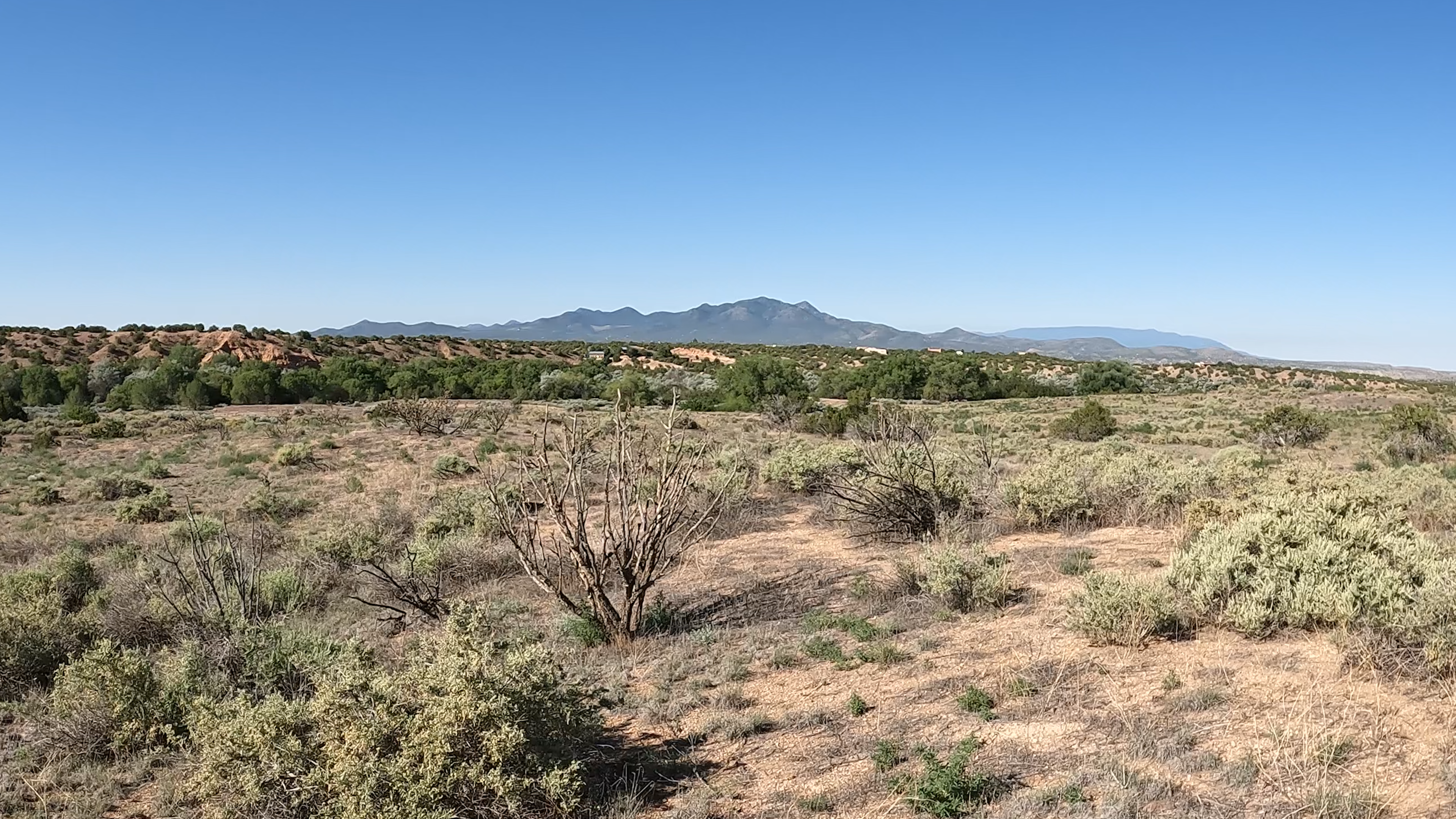
A team works on a stabilization project to reduce erosion caused by the arroyo at San Marcos Pueblo.
A 20-acre portion of Pueblo San Marcos, the largest pueblo ruin in the United States was purchased by The Archaeological Conservancy in 1981. Since then, the Conservancy has acquired two adjacent lots and now preserves more than 90 percent of the site. The Cochiti, who consider themselves descendants of San Marcos’ residents, and the State of New Mexico helped fund the latter acquisitions. Research conducted by various institutions has taken place several times and has made significant contributions to what is known about this pueblo ruin.
Pueblo San Marcos was occupied from at least A.D. 1200 until its abandonment in about A.D. 1700. It is threatened by encroaching subdivision development and by erosion of the nearby arroyo. This 2,000-room pueblo consists of 22 separate room blocks with 10 plazas. It was a significant location in precontact times and continued to be important into the early Spanish colonial period of New Mexico. The ruin of a Spanish mission is also within the boundaries of this preserve.
Many scholars believe that Pueblo San Marcos controlled the nearby Cerrillos turquoise mines for many centuries. Turquoise was the most prized trade item of the Southwest in precontact times. There is speculation that the founding of San Marcos dates to the 11th century, when Chaco Canyon was obtaining enormous quantities of turquoise from the area to trade to the Toltecs and Mayas of central Mexico.
While the Chaco connection is unconfirmed, a Chacoan vessel was removed from the site in the 1920s and is presently in the collections of the School of American Research (renamed as the School for Advanced Research.) Spanish accounts that the people of San Marcos spoke Keresan instead of the local Tano language support this thesis. Keresan is thought to be the language of the Ancestral Puebloan who occupied Chaco Canyon.
The village was visited by Castaño de Sosa in 1591, who gave it the name San Marcos. Juan de Oñate, New Mexico’s first governor, visited the village in 1598. At the time of the 1680 Pueblo Revolt, the pueblo had a reported population of about 600 people, many of whom played a leading role in the revolt. During the Pueblo Revolt, the Spanish were driven from New Mexico and most of the people of San Marcos moved to Santa Fe. They occupied the Spanish capital until the reconquest by Don Diego de Vargas in 1692.
De Vargas reported that the pueblo was in ruins, but he persuaded many of the survivors of the reconquest to return. By 1700, San Marcos was completely abandoned. An extremely limited amount of research has been done at the pueblo to date. Nels Nelson did some testing there in 1914, and Erik Reed did more testing in the 1950s. Unlike many southwestern pueblo sites, San Marcos has survived the perils of artifact looters virtually untouched, and its vast stores of information remain in situ.
Preservation of Pueblo San Marcos is an example of what is happening to America’s past all over the country. When the property was subdivided in the early 1970s, the owners sought to donate the ruins to a public institution, but no entities were willing to take it. Consequently, the subdivision grew up around it. Today, the pueblo is surrounded by high-priced homes and what could have been preserved 10 years ago for nothing turned into an expensive project.




